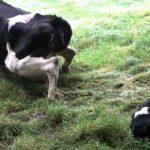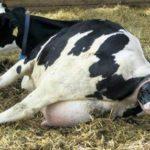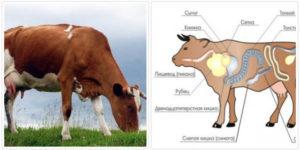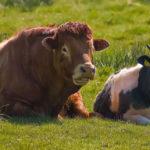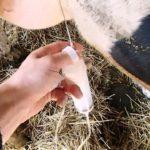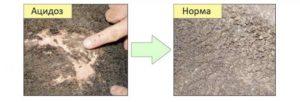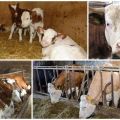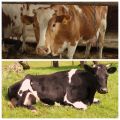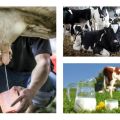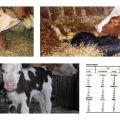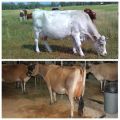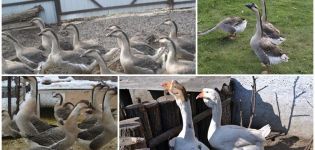Why the cow does not stand up after calving and what to do
Childbirth is a complex physiological process that causes the restructuring and renewal of all internal organs and systems of the animal. It is under severe stress, the body is recovering for a long time. Sometimes the cow does not stand up after calving, and without broken legs or other obvious problems. This is the most serious problem requiring urgent veterinary attention.
Causes of disorders
The cow most often does not stand up due to paralysis of the limbs that occurs after calving. The reasons for this are varied and depend on many factors. Moreover, this happens both with a young cow, and with an experienced one, who has given birth many times. Usually this disorder occurs when the fetus is large. At the same time, childbirth is protracted and difficult, damage to the nerve endings of the mother's hind limbs occurs, which causes their paralysis. This is typical for young, primiparous animals, as well as cows with narrow pelvic bones, which diverge unevenly during childbirth.
You should be especially careful if there were injuries in the hip region during pregnancy or in previous births: dislocations or fractures.
Other possible causes of the disorder:
- there is an inflammatory process in the joints;
- weakened immunity: the body lacks calcium, magnesium, phosphorus, vitamins E, A, D;
- the nutrition of the pregnant cow was unbalanced;
- there are diseases such as hypophosphatemia, alimentary osteodystrophy;
- the conditions for keeping animals do not meet the standards, there is overcrowding;
- there was not enough physical activity during pregnancy.
Paralysis is possible with inflammation or damage to the tissues of the uterus. Any movement at the same time brings the animal the sharpest pain, and it is afraid to move. First of all, when limb paralysis is detected, it is recommended to pay attention to the pelvic area of the animal. A young primiparous cow is not always ready for childbirth, so you should immediately contact your veterinarian.
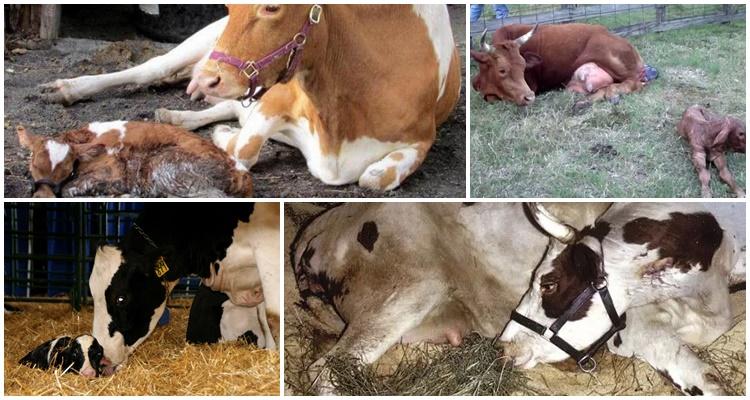
Consequences for the animal
A cow that has fallen after calving must be lifted, otherwise the situation may become more complicated and reach a dangerous point: from permanent paralysis to the death of the animal. Of course, this is not a necessary outcome, the result usually depends on the cause of the fall. Even if it is not possible to lift the cow by any means, it is worth choosing the anatomically correct position with the help of a veterinarian. This will help avoid the dangerous consequences of the disease. Childbirth for a cow is a painful process. Due to strong attempts, blood circulation in the sacral region becomes uneven, which damages this entire area.
As a result, the blood can completely freeze, and this is often found during autopsy, when the owner decides to slaughter the cow. An uncleared animal remains motionless and dies within a year.
If a fracture or dislocation of the femur is found, the intervention of a veterinarian is required, since wrong actions always end in the death of the cow. For example, bone debris often affects the femoral artery, which is fatal. If there is even a barely perceptible tremor and an increase in temperature in the muscles of the hind limbs, you should urgently call a veterinarian. If the fever after calving is not managed in time, the animal will be very difficult to save.
You should also sound the alarm if the cow has:
- mouth is open, tongue stick out, salivation is increased;
- the pupils are dilated, the eyelids are half-open;
- wheezing, uneven breathing is observed;
- there is no reaction to injections with sharp objects;
- there is no urination and defecation for a long time;
- the head is thrown back, and the animal does not want to change its position;
- body temperature below 35 about.
What to do if a cow does not rise to her feet after calving
It is important to identify the cause of the paralysis first. Necessarily with the help of a veterinarian - a professional will establish the correct diagnosis and choose a treatment regimen. Before the arrival of a specialist, the body of the animal is rubbed with dry hay, wrapped with something, since the heat contributes to the dynamics of the muscles. The animal usually lies on its side, it needs to be turned on its other side from time to time to avoid bedsores.
Mechanical impact
Postpartum paralysis is often caused by postpartum shock. In this case, you can help the cow in different ways, but first the calf is sent to another corral, otherwise the mother can crush it.

Some of the methods seem brutal, but they are effective:
- Scare. It is recommended to make an unexpected sound, loud enough for the fright to bring the animal out of shock.
- Hold the breath. If oxygen intake is limited for 10-30 seconds, it is quite possible that the cow will wake up from shock. To do this, close your nostrils with your hand and close your jaws.
- Curl or pull up the tail.
- Apply an electric drive.
Attempts will have to be combined, repeated several times with short breaks in order for the animal to rest and gain strength.
Medicines
Some medications are given to an animal with postpartum hind limb paralysis in any situation. If a cow falls due to a nervous disorder, gynecological pathologies or diseases of bones, joints, prescribe:
- anti-inflammatory, anti-edematous agents;
- preparations containing selenium, calcium, phosphorus, vitamins E, A, C;
- with paresis - subcutaneous injections of caffeine, Vitam, benzoate;
- to normalize the general condition of the animal - strengthening drugs;
- droppers, calcium chloride (10%), glucose (40%);
- with hypophosphatemia - injections of ursolite (500 kg of weight 500 mg), calcium hypophosphate.
Some veterinarians inject air into the udder to tighten the udder lobe and then bandage the teats. The animal is in this position from 15 to 30 minutes. The procedure helps in some cases, but not every veterinarian approves of it.
Nutrition during illness
During the period of recovery and observation by a veterinarian, you should pay special attention to the feeding diet, carefully select feed and supplements containing:
- calcium and phosphorus salts;
- glucose;
- fish oil;
- vitamins.
The main feed should be grain, peas, high-quality hay, chopped grass, barley, and other grains.Any food should be served to a chopped cow. Some farmers mix the feed with sweet water to improve absorption.
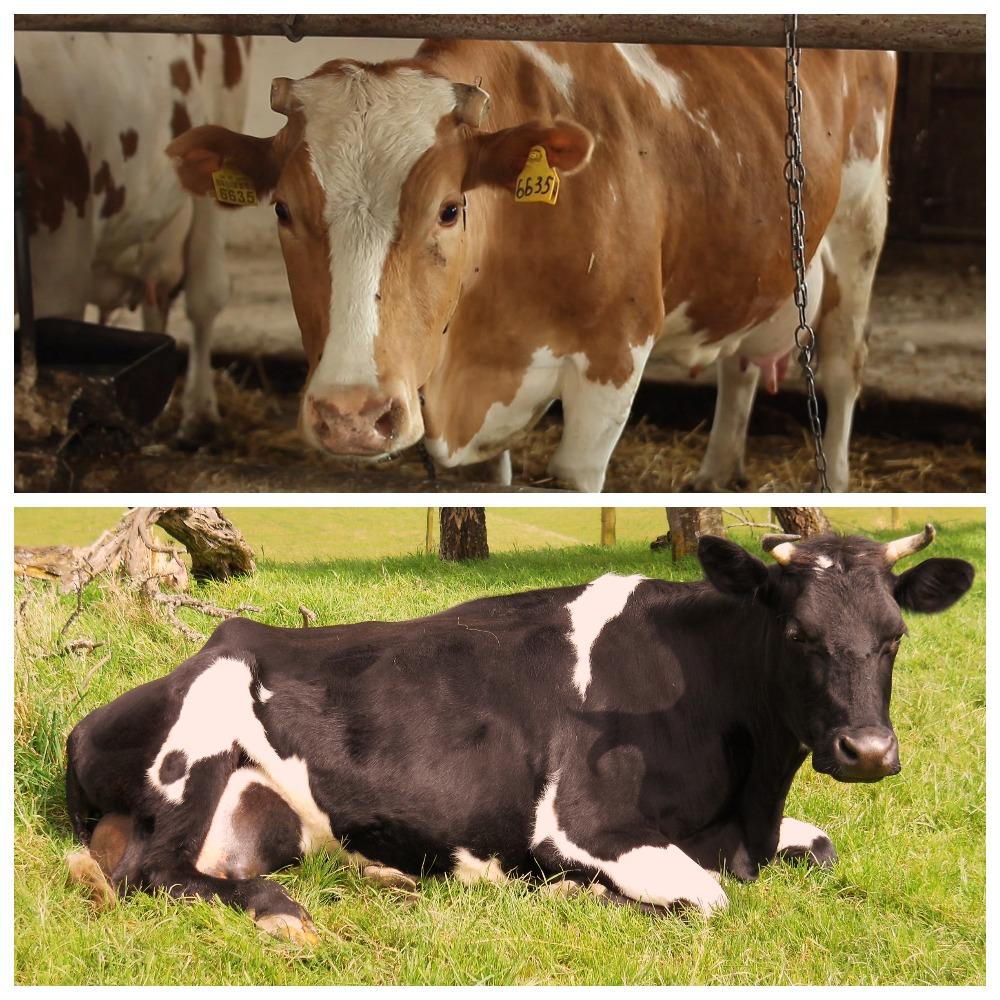
Tips for caring for a calving cow
To save livestock from health problems, and the farmer from material losses, one should take into account the rules that are recommended for both beginners and experts in animal husbandry:
- Always monitor your diet. Malnutrition is often the root of most animal problems.
- Observe general safety precautions when interacting with animals.
- Provide good grooming and acceptable living conditions for the cow.
- Carefully monitor the entire pregnancy, calving and postpartum conditions.
- Do not self-medicate. This can end in disaster, as practice shows.
Despite the fact that the cow is considered a strong and independent animal, she still needs human help. Especially acute after calving. The breeder should immediately sound the alarm and call professionals if the cow does not get up in the first days after giving birth. You need to follow the advice of experienced colleagues, and take independent actions only as a last resort.
